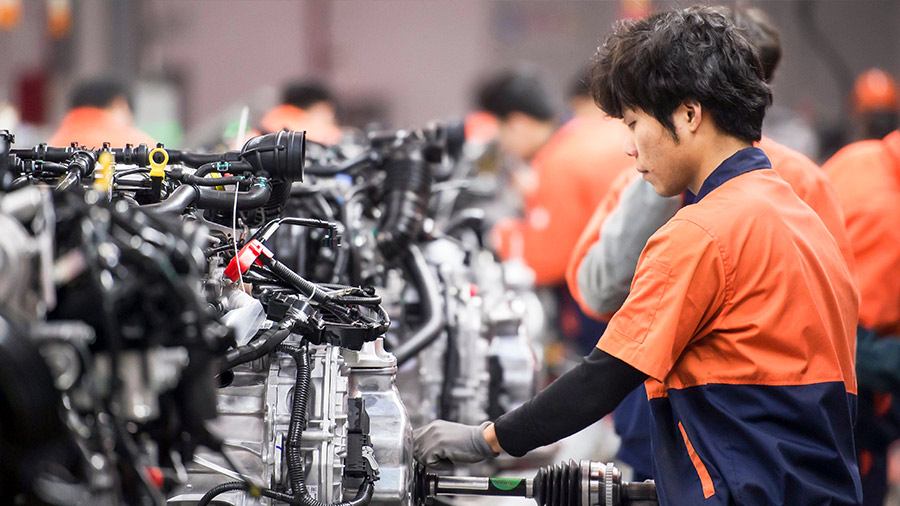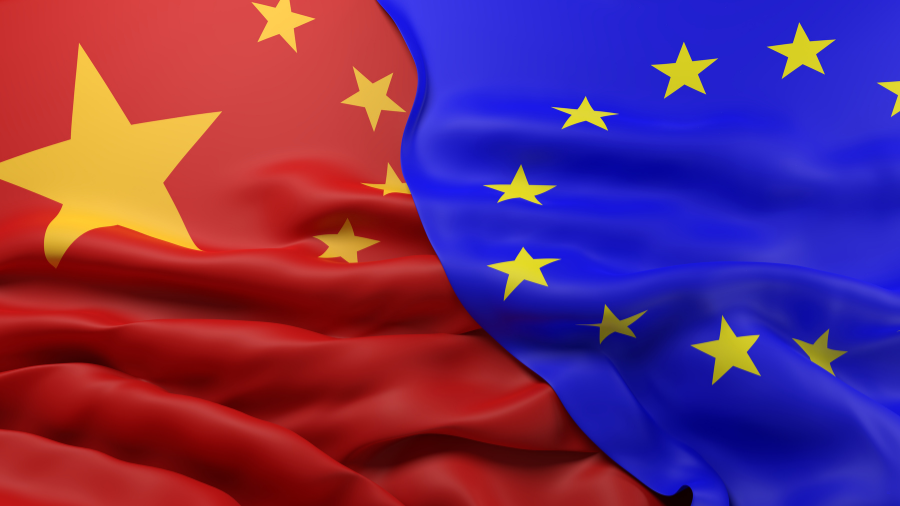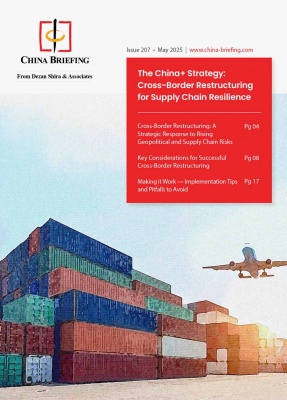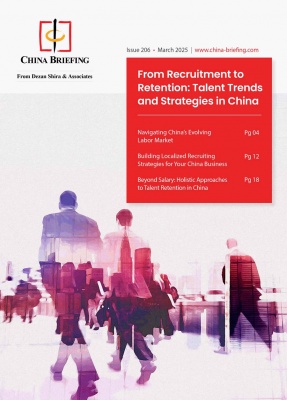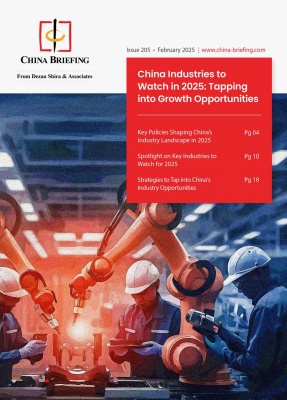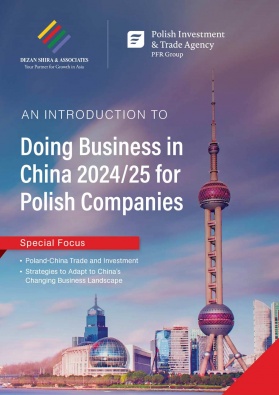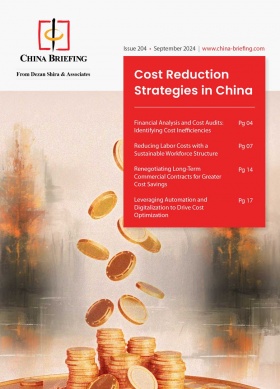China Industries to Watch in 2025
- China industries to watch in 2025 review starts from the country’s strategic focus on green energy, electric vehicles, AI, healthcare, and advanced manufacturing, all presenting lucrative opportunities for foreign businesses and investors, particularly in emerging sectors like renewable energy, AI applications, and smart manufacturing.
- Navigating China’s complex regulatory landscape and intense competition from local players requires careful adaptation, with a strong emphasis on compliance with evolving laws such as data protection and sector-specific restrictions.
- Despite trade tensions and geopolitical risks, China’s open policies, including easing foreign investment restrictions in manufacturing and capital markets, create opportunities for foreign firms, especially in high-tech and eco-friendly sectors.
As the world’s second-largest economy, China continues to be a hub of innovation and economic dynamism. Its vast domestic market, advanced digital ecosystem, and strategic focus on modernization have made it a global leader in several industries. In 2025, China’s evolving consumer preferences, policy shifts, and technological advancements will shape opportunities for businesses and investors alike. From the rise of green technologies to the growing appetite for health-conscious products, the country offers lucrative avenues for foreign firms ready to adapt to its unique market dynamics.
However, thriving in China’s competitive environment requires more than just identifying growth areas. Businesses must navigate complex regulatory frameworks, cultural nuances, and a fast-paced digital transformation. By understanding the opportunities and challenges in key sectors, companies can position themselves effectively to succeed in one of the world’s most dynamic markets. This article explores the top industries to watch in China in 2025 and provides insights into overcoming potential hurdles.
Reflecting on 2024: The impact of China’s stimulus and government support on key industries
To sustain steady economic momentum, China is leveraging its stimulus toolkit, with key measures such as a 50-basis-point cut to the reserve requirement ratio by the People’s Bank of China (PBOC). These actions are designed to address domestic and international challenges and help meet the government’s annual growth target of 5 percent. By infusing liquidity into the economy, the government is fostering growth across strategic sectors aligned with national priorities.
The current stimulus package emphasizes sectors poised for long-term development, including green energy, high-tech manufacturing, and digital commerce. As China transitions to a more sustainable economy, industries like renewable energy, hydrogen, and electric vehicles are set to benefit from both domestic innovation and increased foreign investment.
Additionally, advanced manufacturing technologies, such as AI-driven automation and smart factories, are gaining traction as part of China’s ongoing industrial modernization efforts. In the digital space, live-streaming commerce and cross-border e-commerce will continue to expand, driven by both domestic consumption and global trade.
Simultaneously, China’s efforts to open its capital markets are enhancing opportunities for foreign investors. The country has implemented new measures to make the A-share market more accessible by lowering shareholding thresholds, reducing lock-up periods, and expanding investment routes. These reforms, effective December 2024, aim to attract a wider range of international investors, particularly in strategic sectors like green energy, high-tech manufacturing, and digital commerce. With these policy adjustments, China is not only fostering domestic growth but also encouraging foreign capital to drive innovation and help achieve its long-term economic goals.
In another significant step to attract foreign investment, China has fully opened its manufacturing sector to international capital. The latest update to the national negative list for foreign investment, which came into effect in November 2024, has removed all restrictions on foreign investment in manufacturing. This move follows earlier progress in China’s free trade zones, which had already implemented zero-restriction policies in this area in 2021. As a result, almost all sectors of China’s manufacturing industry are now open to foreign investors, making it one of the most competitive and globally integrated sectors. This is particularly significant given that China has been the world’s largest manufacturer for over a decade and continues to drive growth in high-tech manufacturing, such as medical equipment and computer sectors. The opening of the manufacturing sector presents vast opportunities for foreign investors, particularly in high-end, smart, and eco-friendly manufacturing, as China seeks to enhance its technological capabilities and maintain its leadership position in global industrial production.
This targeted focus on innovation, sustainability, and increased foreign investment, supported by stimulus measures and market reforms, is positioning these sectors as key drivers of China’s economic resilience and growth through 2025.
China industries to watch in 2025
Artificial intelligence (AI) and machine learning
Artificial Intelligence (AI) and machine learning are set to dominate China’s industrial landscape in 2025, emerging as transformative forces across multiple sectors. The rapid adoption of digital technologies, robust government support, and a growing appetite for AI-driven solutions have positioned these industries at the forefront of innovation and growth.
AI applications are increasingly integrated into key industries such as healthcare, finance, manufacturing, and smart cities.
From autonomous vehicles to data analytics and robotics, the versatility of AI is reshaping operations and consumer experiences alike. Machine learning, a critical subset of AI, is spearheading advancements in predictive modeling, facial recognition, and personalized services, further solidifying its importance.
China’s regulatory landscape also plays a pivotal role in this evolution. A strong emphasis on data privacy and security creates a framework that balances rapid technological advancement with oversight. While compliance can be challenging, it fosters a stable environment for growth and innovation.
The market potential for AI and machine learning in China is staggering. The AI sector is projected to grow from US$34.2 billion in 2024 to US$154.8 billion by 2030, with machine learning showing an even higher growth trajectory. These developments are underpinned by significant demand in sub-sectors like robotics, generative AI, and healthcare applications. Remote patient monitoring, telemedicine, and precision diagnostics exemplify the practical impact of these technologies, addressing challenges such as aging demographics and rising healthcare costs.
For foreign investors, China presents both opportunities and challenges in this domain. Areas like research collaborations, localization of AI solutions, and export of advanced technologies offer lucrative entry points. However, success requires a nuanced understanding of local regulations, consumer preferences, and market dynamics. Investors must also navigate issues related to data security and intellectual property, ensuring alignment with China’s unique operational environment.
Electric vehicles and new energy
China’s electric vehicle (EV) and broader new energy industries stand as pillars of its economic strategy and global competitiveness, presenting significant opportunities for investors in 2025 and beyond. As the world’s largest NEV market, China boasts a fleet of over 13.1 million NEVs as of 2022, with electric vehicles comprising nearly 80 percent of the total. In 2023 alone, production and sales of NEVs exceeded 9.5 million units, reflecting annual growth rates of over 35 percent.
Major international automakers like Tesla, BMW, and Volkswagen are expanding operations in China, capitalizing on the country’s advanced industrial ecosystem, expansive market, and cost-efficient supply chains.
Tesla’s Shanghai gigafactory produced 947,000 vehicles in 2023, while BMW and Volkswagen announced multi-billion-dollar investments to enhance EV production and innovation in China. These moves underscore the sector’s magnetism, driven by technological advancements, economies of scale, and a strong domestic policy push toward electrification. China’s dominance extends to the global EV supply chain, controlling over three-quarters of the world’s battery production capacity and significant shares of lithium, cobalt, and graphite processing.
Policy initiatives further bolster this momentum. China’s strategic shift from merely expanding renewable energy capacity to fostering systemic demand has laid the groundwork for long-term transformation. Investments in grid modernization, green hydrogen production, and industrial electrification complement the country’s ambitions to remain a global leader in new energy technologies. These efforts offer vast opportunities for both domestic and international stakeholders, particularly in emerging sectors like sustainable aviation and grid-level energy storage.
Yet, challenges loom on the horizon. Trade tensions are intensifying as major economies take aim at China’s EV industry. In 2024, the United States, European Union, and Canada implemented punitive tariffs on Chinese-made EVs, citing concerns over subsidies, overcapacity, and market distortion. For instance, the US raised tariffs to 100 percent, while the EU imposed anti-subsidy tariffs of up to 37.6 percent. China has responded forcefully, initiating anti-dumping investigations and exploring retaliatory measures targeting key exports from these regions.
These trade disputes reflect deeper geopolitical rivalries and the global competition for leadership in strategic sectors. While China’s policies aim to advance a low-carbon economy and solidify its technological edge, they have also intensified scrutiny from competing economies, many of which have adopted their own subsidy-heavy industrial policies. Efforts to resolve these tensions through WTO mechanisms have proven inadequate, with unilateral actions and retaliations perpetuating a cycle of conflict.
The path forward demands multilateral diplomacy to establish fair competition rules, but achieving consensus in an era of strategic competition remains fraught with challenges.
For investors, the landscape is one of both promise and complexity. The robust growth of China’s EV and new energy sectors underscores their appeal, while geopolitical and trade risks necessitate strategic navigation. With careful alignment to China’s industrial policies and evolving market dynamics, stakeholders can position themselves to capitalize on the sector’s transformative potential.
Health and wellness
China’s health and wellness market is on track for significant expansion in 2025, driven by evolving consumer preferences, advancements in technology, and supportive economic policies. Valued at US$683 billion as of 2024, the market is characterized by a blend of traditional and modern approaches to well-being, offering substantial opportunities for businesses and investors alike.
Post-pandemic, Chinese consumers have embraced a holistic understanding of wellness, prioritizing physical, mental, and emotional health. This shift has spurred demand for solutions that address all aspects of well-being, from fitness and nutrition to mental health and stress management. Young urban consumers, particularly millennials and Gen Z, are driving this change with their preference for convenient, tech-enabled options. Apps focused on fitness, meditation, and nutrition are becoming integral to their routines, offering personalized coaching, real-time tracking, and AI-powered recommendations.
The integration of technology continues to transform the market. Home fitness platforms and smart devices have gained widespread popularity, reflecting the increasing desire for accessible, flexible solutions. By 2025, revenues from fitness apps alone are expected to grow significantly, buoyed by millions of paid subscribers. Similarly, mental health tools, such as meditation apps and virtual therapy platforms, are gaining traction as consumers prioritize emotional well-being.
Traditional Chinese Medicine (TCM) remains a cornerstone of the market, blending seamlessly with modern wellness trends. Products and services that incorporate TCM principles are particularly popular among consumers seeking balance and natural remedies. At the same time, younger demographics favor quick, portable solutions such as health supplements, functional foods, and stylishly packaged wellness products.
In a notable development, China has taken significant steps to open its healthcare sector to foreign investment, offering new opportunities for global stakeholders. The government’s recent decision to permit wholly foreign-owned hospitals in nine major cities, including Beijing, Shanghai, Guangzhou, and Shenzhen, reflects a commitment to modernizing the sector and meeting the evolving healthcare needs of its population. This reform, outlined in a detailed work plan in November 2024 creates a strategic network of locations that cater to diverse regional demands. These pilot programs not only remove previous restrictions but also encourage foreign-invested enterprises (FIEs) to introduce advanced medical practices, cutting-edge technologies, and globally competitive healthcare management systems.
Macroeconomic factors further support market growth. Rising disposable incomes are enabling greater consumer spending on health and wellness, while government initiatives like the “Healthy China 2030” strategy are driving awareness and fostering industry development. Increasing demand for preventive care and sustainable living underscores the long-term viability of the sector.
For investors, the sector offers diverse opportunities, from digital health solutions to organic foods, health supplements, mental wellness platforms, and luxury wellness services. As China’s younger generations continue to redefine health and wellness, the market will remain an attractive prospect for forward-thinking stakeholders aiming to tap into one of the world’s most dynamic economies.
Aerospace and satellite technology
The China Aerospace sector is poised for significant expansion in 2025, driven by substantial government investments, technological advancements, and an increasing focus on national defense and space exploration. With a defense budget of approximately US$230 billion for 2024, China continues to prioritize the development of advanced military aircraft, missile systems, and satellite communications, positioning itself as a global leader in aerospace technology.
The satellite industry, in particular, stands out as a key growth area, with China aiming to deploy extensive satellite constellations for communication, navigation, and earth observation. This presents significant opportunities for both domestic and international investors in satellite services and related technologies. China’s BeiDou Navigation Satellite System, alongside its ambitious space exploration initiatives, including lunar missions and the Tiangong space station, offers avenues for investment in space technology and commercial aerospace services.
However, the growth of China’s commercial space industry, while promising, has faced challenges, particularly in emulating the rapid success of Western counterparts like SpaceX. Although the Chinese government has established ventures like China Satnet and Shanghai Spacecom to develop megaconstellations for internet services, progress has been slower than anticipated.
Despite this, these initiatives present investment opportunities, particularly for private companies capable of navigating the intricacies of China’s state-controlled space environment. With the government’s ongoing support for private sector participation, the commercialization of satellite technology and space exploration is expected to gather momentum, offering opportunities for foreign and domestic investors to engage in a growing and evolving sector in 2025.
Virtual reality augmented reality
The AR & VR market in China is experiencing rapid growth, projected to reach US$8.2 billion in 2024 and grow at a CAGR of 8.72 percent through 2029, reaching US$12.4 billion. The largest segment is VR hardware, expected to generate US$2.9 billion in 2024. By 2029, the number of users in China is anticipated to reach 1.1 billion, with a user penetration of 77.4 percent in 2024, increasing to 79.6 percent by 2029. The average revenue per user (ARPU) is expected to be US$7.3. This growth is driven by strong consumer demand for immersive experiences, especially among younger generations in gaming, entertainment, and social media.
The Chinese government’s active support for emerging technologies through initiatives like Made in China 2025 has spurred investment in AR & VR startups and research. Additionally, China’s large, tech-savvy population and strong manufacturing base provide a competitive edge in producing and distributing AR & VR devices, making the technology more affordable and accessible. This has created a favorable environment for both domestic and international players, particularly in sectors like healthcare, education, and retail, where AR & VR applications are seeing increased adoption.
For foreign companies and investors, the Chinese AR & VR market presents significant opportunities. As Chinese firms lead in hardware manufacturing, international investors can collaborate in R&D, distribution, and marketing of cutting-edge products. Strategic partnerships and joint ventures with local firms could offer foreign companies access to China’s vast consumer base, driving growth in both the domestic and global markets.
Moreover, favorable government policies and incentives for innovation further enhance the prospects for foreign investment in the sector.
What to watch out for when entering the Chinese market
Navigating China’s regulatory landscape remains one of the most significant challenges for foreign businesses. The country’s policies and regulations frequently evolve, impacting industries such as technology, e-commerce, and finance. Recent laws, including the Personal Information Protection Law (PIPL) and tightened regulations on data handling and cross-border transfers, require companies to invest heavily in compliance measures. Moreover, navigating sector-specific restrictions, like those on foreign ownership in strategic industries, can further complicate entry and operations. Staying informed and building partnerships with local firms can help mitigate these challenges, but the dynamic nature of regulations demands constant vigilance.
Another hurdle is the intense competition within the Chinese market. Local companies often possess a deeper understanding of consumer behavior, giving them a competitive edge. International businesses must also contend with established global brands already leveraging China’s advanced digital ecosystem for market penetration. Coupled with cultural nuances that heavily influence purchasing decisions, foreign businesses often need to adapt their marketing and product strategies to align with local preferences. The rapid pace of digital transformation in China, including the dominance of mobile-first platforms and social commerce, underscores the need for innovative, localized approaches to stand out in this crowded landscape.
China in 2025: Challenges, opportunities, and general outlook
As China enters 2025, foreign businesses and investors face a landscape shaped by transformative opportunities and formidable challenges. Economic restructuring, underpinned by strategic initiatives like fiscal reform and technological self-reliance, highlights Beijing’s efforts to navigate headwinds. Industries tied to China’s “new quality productive forces”—semiconductors, electric vehicles, artificial intelligence, quantum computing, and advanced manufacturing—are poised for growth as the government prioritizes technological innovation and resilience. Companies operating in these sectors should expect heightened support, albeit within a tightly regulated framework that reflects the state’s emphasis on self-sufficiency.
However, broader economic conditions remain fraught with uncertainty. A ballooning real estate crisis, high local government debt, and sluggish post-COVID recovery continue to exert pressure. Investors should monitor how the Chinese government attempts to balance short-term stimulus with long-term structural reforms, particularly as fiscal policies evolve to address local government financial strains. The rollout of targeted policies aimed at stabilizing key sectors could provide opportunities, especially for firms aligned with government priorities in innovation and green technologies.
Internationally, the re-election of Donald Trump as US president introduces new complexities for China’s trade and industrial strategies. Renewed tariffs, tightened export controls, and technology restrictions may amplify risks for globally integrated sectors. At the same time, these pressures could accelerate domestic advancements in critical industries.
Looking ahead, 2025 will test the resilience of China’s industries amid ongoing transitions. While challenges are significant, opportunities abound in sectors aligned with strategic national priorities. Staying attuned to China’s policy shifts, market signals, and global dynamics will be essential for navigating this pivotal year.
About Us
China Briefing is one of five regional Asia Briefing publications, supported by Dezan Shira & Associates. For a complimentary subscription to China Briefing’s content products, please click here.
Dezan Shira & Associates assists foreign investors into China and has done so since 1992 through offices in Beijing, Tianjin, Dalian, Qingdao, Shanghai, Hangzhou, Ningbo, Suzhou, Guangzhou, Haikou, Zhongshan, Shenzhen, and Hong Kong. We also have offices in Vietnam, Indonesia, Singapore, United States, Germany, Italy, India, and Dubai (UAE) and partner firms assisting foreign investors in The Philippines, Malaysia, Thailand, Bangladesh, and Australia. For assistance in China, please contact the firm at china@dezshira.com or visit our website at www.dezshira.com.
- Previous Article Guide to Corporate Taxation and Compliance in China 2025
- Next Article An Introduction to Doing Business in China 2025




